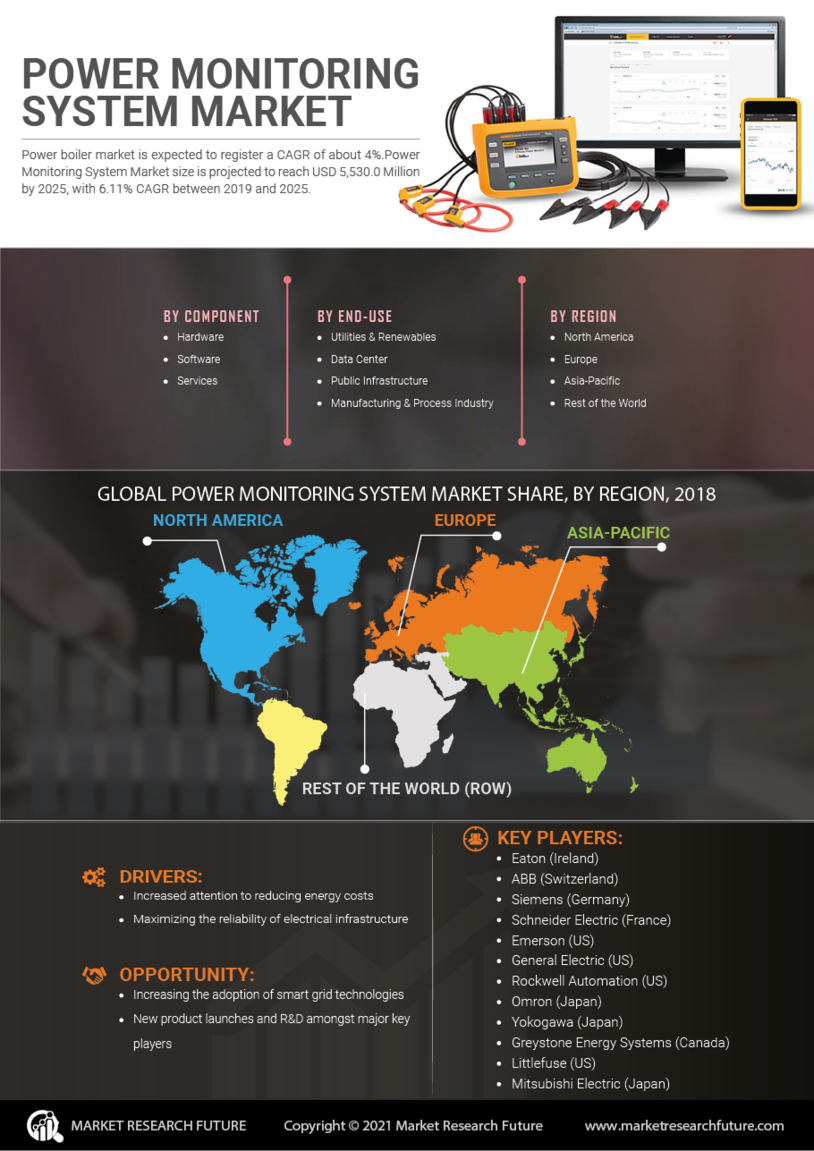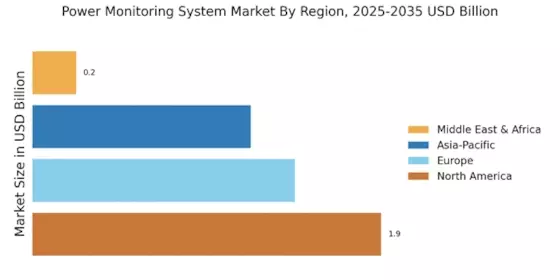Regulatory Compliance and Standards
The Power Monitoring System Market is significantly influenced by the increasing regulatory compliance requirements imposed on various sectors. Governments and regulatory bodies are establishing stringent standards aimed at reducing energy consumption and promoting sustainability. For instance, regulations may mandate the implementation of energy monitoring systems in industrial facilities to ensure compliance with energy efficiency standards. This trend is particularly evident in sectors such as manufacturing and commercial real estate, where energy consumption is closely monitored. As organizations strive to meet these regulatory demands, the adoption of power monitoring systems is expected to rise, thereby driving growth in the Power Monitoring System Market. Compliance not only helps avoid penalties but also enhances corporate reputation and operational efficiency.
Growth of Smart Grids and Smart Cities
The expansion of smart grids and smart cities is a pivotal driver for the Power Monitoring System Market. As urban areas evolve, the integration of smart technologies into energy infrastructure is becoming increasingly prevalent. Smart grids facilitate real-time monitoring and management of energy distribution, which is essential for optimizing energy usage. The implementation of power monitoring systems within these frameworks allows for enhanced visibility and control over energy consumption patterns. As cities strive to become more efficient and sustainable, the demand for power monitoring systems is likely to increase. This trend is expected to create new opportunities within the Power Monitoring System Market, as municipalities and utility companies seek to invest in advanced monitoring solutions to support their smart city initiatives.
Increased Focus on Sustainability Initiatives
The growing emphasis on sustainability initiatives is a significant driver for the Power Monitoring System Market. Organizations across various sectors are increasingly adopting sustainable practices to minimize their environmental impact. This shift is often accompanied by the implementation of power monitoring systems, which provide insights into energy consumption and help identify areas for improvement. According to industry reports, companies that actively monitor and manage their energy usage can achieve substantial reductions in greenhouse gas emissions. As stakeholders, including consumers and investors, demand greater accountability regarding sustainability, the adoption of power monitoring systems is expected to rise. This trend not only supports corporate social responsibility goals but also enhances operational efficiency, thereby benefiting the Power Monitoring System Market.
Rising Demand for Energy Management Solutions
The increasing need for efficient energy management solutions is a primary driver for the Power Monitoring System Market. Organizations are increasingly recognizing the importance of monitoring energy consumption to reduce costs and enhance operational efficiency. According to recent data, energy costs can account for a significant portion of operational expenses, prompting businesses to invest in power monitoring systems. These systems enable real-time tracking of energy usage, allowing for timely adjustments and optimizations. As energy prices continue to fluctuate, the demand for effective energy management tools is likely to grow, further propelling the Power Monitoring System Market. Companies that adopt these systems may experience improved sustainability metrics and reduced carbon footprints, aligning with broader environmental goals.
Technological Advancements in Power Monitoring
Technological advancements play a crucial role in shaping the Power Monitoring System Market. Innovations such as advanced sensors, cloud computing, and artificial intelligence are enhancing the capabilities of power monitoring systems. These technologies enable more accurate data collection and analysis, facilitating better decision-making regarding energy usage. For example, the integration of AI algorithms can predict energy consumption patterns, allowing organizations to optimize their energy strategies proactively. The market for power monitoring systems is projected to grow as these technologies become more accessible and affordable. As organizations seek to leverage these advancements to improve energy efficiency and reduce operational costs, the Power Monitoring System Market is likely to witness substantial growth.


















Leave a Comment